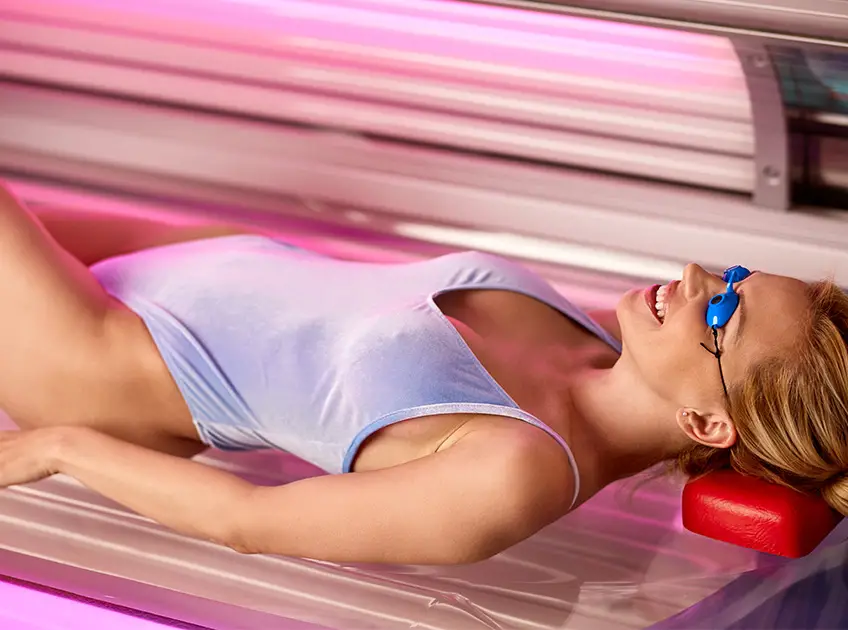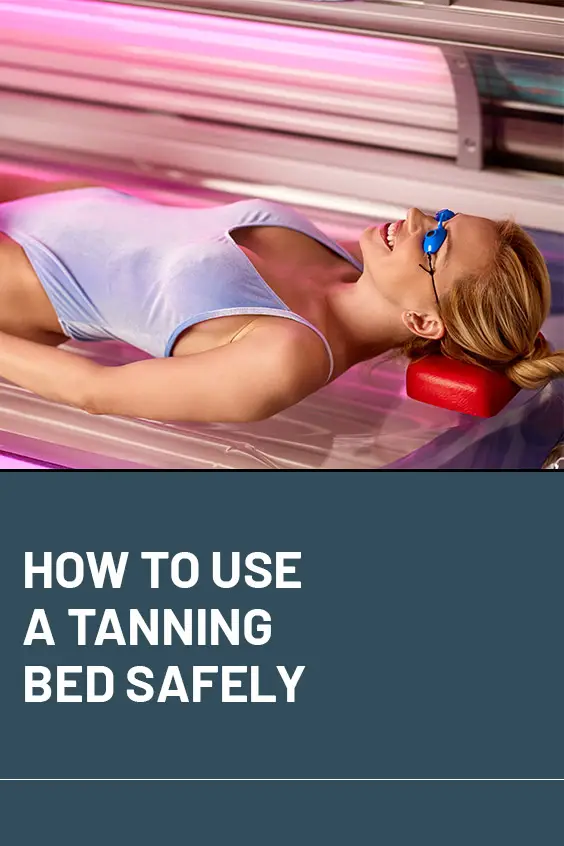
Important: This article is for informational purposes only. Please read our full disclaimer for more details.
Gone are the days when you have to sit for hours under the sun to develop a tan. As things advance, tanning beds, self-tan sprays, and tanning lotions come on the market that helps darken the skin without basking under the sun. Even though tanning is not safe and healthy for the skin, people do it for cosmetic reasons. It gives a gorgeous bronze golden glow to the skin, making it look beautiful. While natural suntan develops with exposure to harmful UV rays, tanning beds are no different.
Article Contains
How Does A Tanning Bed Develop Tan?
Tanning beds emit the same UVA and UVB rays as the sun; therefore, they develop a tan. However, at the same time, they can damage the skin equally. The only advantage tanning beds offer is that you don’t have to step out and sit under the scorching sun to develop a tan. Also, it offers a quick and easy solution to getting a natural tan. Since the chances of skin damage are always there, some preventive measures help. If you wonder how to use a tanning bed safely so that your skin remains as healthy as before, it is important to take certain precautions before, after, and while using the tanning bed. Here, we have discussed all this in detail to help lessen the damaging effects and to leave your skin nourished and glowing rather than dry and red.
How to Tan Safely in A Tanning Bed

When you are exposing your skin to UV rays, you will never be able to fully protect it. However, following these steps will aid in lessening the side effects and developing an even and stunning golden glow.
1. Things To Do Before Tanning

Preparing the skin before lying down in the tanning bed is essential. It can be done in the following ways-
- Shave And Exfoliate: Perform these two practices on the skin at least one or two days before your tanning bed session. It will help to get rid of all the dead skin cells. Exfoliating and shaving the skin after tanning will strip the tan along with the dead skin cells.
- Moisturize: Once you have shaved and exfoliated, shower with an oil-free moisturizer to lock in some extra hydration. A well-hydrated and moisturized skin develops a better tan than dry skin.
- Check Your Medications: Check if you are on certain medications that may make skin sensitive to UV radiation. In such cases, you may end up with sunburn instead of suntan.
- Spf Lip Balm On Your Lips: It is essential to protect lips from UV rays to prevent them from getting dry and cracked.
- Remove All Makeup And Products: Do not wear any makeup, skincare, deodorant, or other products that consist of essential oil, as it may react differently to UV rays.
[ Read: Shower After Tanning ]
2. Things To Do During The Tanning Session
Once you reach the salon and enter your private tanning room, follow these to get the most out of your tanning bed session-
- Protect Your Private Areas: The fewer clothes you wear inside the tanning bed, the complete tan you will have. However, disrobe as per your comfort. If you want to tan nude, protect areas that are not normally exposed to the sun.
- Apply Indoor Tanning Lotion: Salons provide tanning lotions with ingredients suitable for tanning beds. Such Indoor Tanning Lotion moisturize and hydrate the skin to develop a good tan and prevent sunburn. Do not forget to apply them to your whole body.
- Wear Eye Protection: Never enter a tanning bed without eye protection, as harmful UV rays can damage your eyes. Most salons provide eye protectors that you can rent before entering the tanning bed to tan safely.
3. Things To Do After The Tanning Session
Once the tanning session is complete, following a few more aftercare instructions will help to develop the best tan. At the same time, it will ensure keeping your skin hydrated, nourished, and glowing. Besides, the tan will stay longer.
- Wait For 1-2 Days For The Next Tanning Session: The tanning process is gradual. It doesn’t happen overnight. Once you are out of the tanning bed, the skin is still under work to develop tan and recover from the exposure to UV radiation. So, wait at least 24 hours before your next tanning session, but to be safe, wait 36-48 hours.
- Use Tan Extender: Tan extenders help to maintain the golden bronze glow for longer. Use only high-quality tan extenders that will ensure the best results.
- Maintain Your Tan: It takes effort to maintain a tan and to achieve it, you need to tan 1-3 times a week. Talk to the experts in the salon and plan your tanning sessions according to your skin type, skin tone, and tanning preference.
- Moisturize The Skin: Tanning makes the skin vulnerable. Without proper care, it can cause the skin to dry and peel if proper care is not taken. The only way to prevent and recover the skin from UV exposure is to keep it well-hydrated. It is best to apply moisturizer after a bath or shower to lock in extra moisture.
Final Words
It’s a common misconception that tanning beds are safer than the sun. Tanning beds give out UV radiations at the same intensity as the sun. Therefore, taking the preventive measures mentioned above will only help to use the tanning bed safely and keep the sanity of the skin intact.
You Might Also Like:
- How to Get Fake Tan off Hands
- Can You Still Get A Tan from Clouds? How long should I sit
- Can You Get A Tan Through A Window?
- Can You Get Tan In The Shade
- Can You Tan With Makeup On
- Can You Tan After Botox
- Can You Tan In The Winter?
- How to Tan with Fair Skin and Freckles?
- How To Tan Faster In A Tanning Bed: 6 Ways
- Can You Tan With Sunscreen
- Olive Oil (Jaitun Ka Tel): Amazing Benefits and Uses
- How To Fix An Orange Spray Tan
- Does Self Tanner Expire? What Happens If You Use It?
- What To Wear In A Tanning Bed
- Can You Use Tanning Bed Lotion Outside? How To Use It?
- What To Do After Tanning Bed
- What Does The Uv Index Have To Be To Tan
- 10 Best Tingle Tanning Lotions
- 7 Best Indoor Tanning Lotions For Face
- 7 Best Tanning Bed Lotions For Fair Skin
















